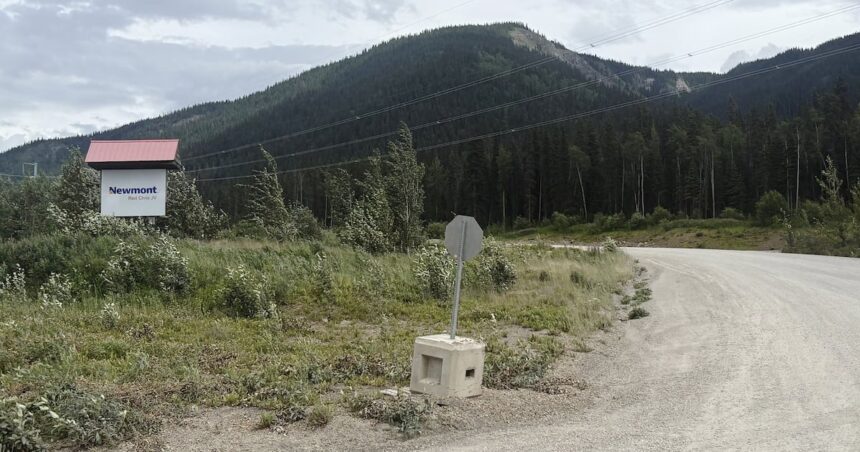Article – The call came on a Tuesday afternoon—15 miners trapped after a partial collapse at the Highland Copper operation near Nelson, British Columbia. Within hours, what began as a local emergency transformed into a national story that has captured Canadian attention for nearly 72 hours.
“We’ve confirmed natural airflow is reaching the refuge chamber where the miners are sheltering,” said Camila Hernandez, Highland Copper’s emergency response coordinator, during yesterday’s media briefing. “Communication lines have been established, and all 15 miners are reporting stable conditions.”
Standing under unforgiving July rain, Hernandez’s relief was visible as reporters gathered at the makeshift command center. The miners, trapped approximately 520 meters underground, have been there since Tuesday’s collapse blocked the main access shaft with thousands of tons of rock and debris.
The mining community in British Columbia is no stranger to emergencies. In 2019, a similar incident at the Copper Mountain operation saw seven miners trapped for 31 hours before rescue teams could reach them. But this situation presents unique challenges.
Provincial Minister of Mines Eleanor Whitaker told me during a phone conversation that rescue crews are battling complex geological conditions. “The ground remains unstable in sections, which means our teams must proceed with extraordinary caution. Every centimeter of progress must be secured before advancing.”
Local residents in Nelson have rallied in ways that remind us how resource communities band together during crisis. The community center has become a support hub where families wait for updates, with volunteers arriving hourly with food, blankets, and emotional support.
“My brother Jason is down there,” said Margot Chen, whose tired eyes revealed three nights of minimal sleep. “He’s worked in mines for fifteen years. He always said the refuge chambers were there for a reason, but you never think your family will need them.”
The refuge chamber—a steel room with emergency supplies, water, and air—has become central to this story of survival. Designed to sustain miners for up to 96 hours, these safety features represent mining’s evolution toward greater worker protection.
Highland Copper’s CEO David Tanner made his first public appearance today, flying in from Toronto headquarters. “We’re throwing every resource at this rescue. Three separate teams are working on three potential access routes simultaneously,” he explained while touring the site with federal safety officials.
Independent mining safety expert Dr. Raoul Gagnon from McGill University cautions that while the situation appears stable, psychological factors become increasingly important as hours pass. “Even in safe conditions, the stress of confinement combined with uncertainty about rescue timing can create significant trauma,” he noted during our conversation yesterday.
What makes this rescue particularly challenging is the surrounding rock formation. According to geological surveys published by Natural Resources Canada, the Highland operation sits within a complex fault zone that requires specialized drilling equipment for safe extraction.
The rescue teams include specialists from across Western Canada. Among them is James Whitefeather, who participated in the 2010 Chilean mine rescue that captured global attention. “This situation is different in many ways, but the principles remain the same—maintain air, communication, and hope while engineering a safe extraction route,” he explained.
Indigenous leaders from the nearby Ktunaxa Nation have joined provincial officials at the site. Elder Margaret Williams performed a ceremony yesterday morning as rescue workers prepared for their shift. “Our territories have yielded minerals for generations. The earth gives, but sometimes it also challenges us,” she remarked softly.
Federal Minister of Labour Samantha Taylor announced this morning that emergency funding has been activated to support rescue efforts. “We’ve mobilized specialized equipment from CFB Comox that will arrive this afternoon. Additionally, experts from our mine safety division are on-site providing technical guidance.”
Meanwhile, families continue their vigil. Impromptu prayer circles form hourly in Nelson’s community center. Local restaurants have set up a rotation to provide hot meals, while a children’s art table overflows with drawings for “the miners under the mountain.”
The Highland operation employs nearly 300 workers and contributes significantly to the region’s economy. While questions about safety protocols will inevitably follow this incident, the focus remains squarely on bringing the trapped workers to the surface.
Weather conditions have complicated surface operations, with unseasonable July rainfall creating muddy conditions and slowing equipment transportation. Nevertheless, drilling teams reported making steady progress overnight.
“We’ve cleared approximately 40 percent of the most viable rescue route,” Highland’s Chief Engineer Paulo Morales stated in this morning’s update. “If conditions remain stable, we could reach the chamber within 36 hours.”
For families waiting above ground, each hour stretches painfully. Support workers from provincial emergency services have arrived to provide counseling and assistance. Local teacher Miranda Johnson organized a children’s activity program for miners’ families, creating space for kids while parents focus on updates.
As this story continues to unfold, it serves as a stark reminder of both the dangers resource workers face and the remarkable emergency systems designed to protect them. The miners have reported through brief communications that they remain in good spirits, rationing supplies and maintaining confidence in their rescue.
The community waits, the nation watches, and somewhere deep beneath the mountains of British Columbia, fifteen miners hold onto hope that grows stronger with each meter the rescue teams advance.






